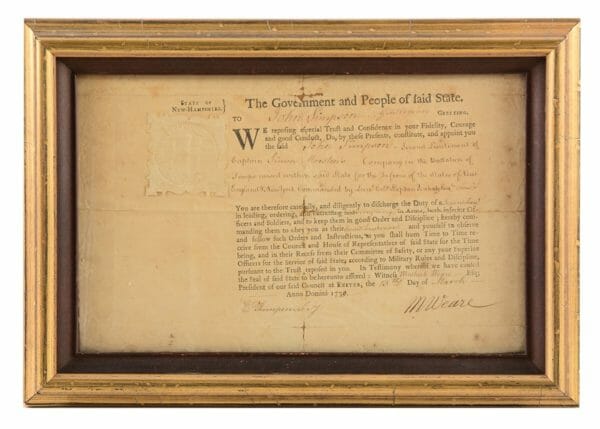U.S.A. –-(Ammoland.com)- In response to “The Shot Heard ‘round the World” on April 19, 1775 in Concord, Massachusetts, thousands of Colonial militiamen descended upon Boston and, eventually, bottled up the British within the city.
On June 17, 1775, the British crossed Boston Harbor and attacked the American position on Breed’s Hill, which history has erroneously remembered as Bunker Hill. It was there, while waiting for the attack, that Colonel William Prescott uttered those famous words: “Don’t fire until you see the whites of their eyes!”

One soldier, Private John Simpson, failed to heed Prescott’s orders, and fired his Dutch Type III smoothbore musket, resulting in a volley of British fire that was, thankfully, too far away to have been truly effective.
With that one shot, Simpson opened the Battle of Bunker Hill and cemented his place in history. When the battle ended, the British had taken the ground previously held by the Americans. In that sense, they were victorious, despite suffering more than double the casualties of the Americans.
Prescott’s orders and Simpson’s failure to follow them were not without consequence – and I’m not referring simply to the initial British volley. Instead, Simpson was court-martialed for his actions. The act was more a matter of procedure than punishment, as he went on to serve admirably during the remainder of the war, rising to the rank of major.
Because no one knows for sure who fired “The Shot Heard ‘Round the World,” it is impossible to know what gun fired it. Were that information to be known, then that gun – should it still exist – would certainly be the most important arm in all of American history.
Instead, because we do know who fired first at Bunker Hill – and because the gun still exists – it is my opinion that John Simpson’s .79 caliber Dutch Type III musket is the most important arm in all of American history. Amazingly enough, that gun is now up for sale for the first time in more than two centuries. It will cross the auction block on Wednesday, October 23, 2019 at Morphy Auctions in Denver, Pennsylvania.

As far back as the reign of Henry VIII, the British had been purchasing arms of one kind or another from what is now the Netherlands. They were inexpensive arms, often bought used, that were kept in storage at the Tower of London, seen as unfit for use by a proper British soldier.
Dutch Type III muskets were often altered with barrel bands added by the salvage contractors when the muskets were shipped. Simpson’s musket is one of those probably altered by the salvage contractors, as the barrel retaining pins were removed as well as the ramrod ferrules, and four brass bands were added during the period.
The musket is also complete with its original matching numbered bayonet.
Now, to have a pre-Revolution Dutch musket and bayonet in this condition is impressive enough, but to have it tied to such a historic event is even better. Of course, that tie means nothing without the proper provenance to back up the claims, and this musket’s provenance is ironclad. Amazingly, the gun has been in the Simpson family for more than two centuries.

John Simpson, who was the grandfather of Ulysses S. Grant and the great grandfather of Meriwether Lewis, passed it down to his son, Samuel Simpson, Sr., who passed it to his grandson, Samuel N. Simpson, Jr. The musket then went to the current owner’s maternal great-grandfather Charles Lyon Simpson. It was then given to his grandmother, then his mother, and finally, to the current owner.
The musket is accompanied by Second Lieutenant John Simpson’s original commission dated March 13th, 1778 from the state of New Hampshire. The appointment is in Captain Simon Marston’s Company in the Battalion of troops raised within said state for the Defence of the States of New England & New York Commanded by Lieut. Col. Stephen Peabody, Esq. It is signed by E. Thompson and M. Weare and has the pressed seal of New Hampshire.

As if the familial chain of custody wasn’t enough, the gun has also been featured in a variety of publications over the years, and even comes with a book that is chock full of professionally-researched history related to the gun and the Simpson family.
The amount of history oozing out of this gun is unprecedented. Not only has it “seen the elephant,” it single-handedly sparked an elephant charge, resulting in the Battle of Bunker Hill.
Now that it’s up for sale, the new owner will be the first non-Simpson to own the musket in more than 240 years.
About Logan Metesh
Logan Metesh is a historian with a focus on firearms history and development. He runs High Caliber History LLC and has more than a decade of experience working for the Smithsonian Institution, the National Park Service, and the NRA Museums. His ability to present history and research in an engaging manner has made him a sought after consultant, writer, and museum professional. The ease with which he can recall obscure historical facts and figures makes him very good at Jeopardy!, but exceptionally bad at geometry.
